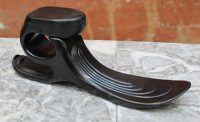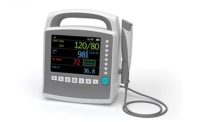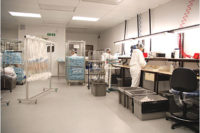Reprocessing can save health care providers millions of dollars and divert thousands of tons of waste from landfills and incinerators. According to the market research firm Millennium Research Group (MRG), the U.S. market for reprocessed medical devices will grow at an average annual rate of almost 9 percent through 2017.
This year alone, U.S. health care facilities saved approximately $290 million in supply costs as a result of reprocessing cardiovascular, laparoscopic, arthroscopic and gastrointestinal devices. Approximately 25 percent of hospitals reprocess at least one of these device categories.
Larger facilities are more inclined to reprocess, since the greatest savings are found when reprocessing is done in bulk, says MRG analyst Sohaib Perwaiz. Approximately 45 percent of hospitals with more than 250 beds reprocess at least one category of medical devices, while only 15 percent of hospitals with fewer than 50 beds do. Smaller facilities are subject to more bargaining pressure from OEMs and are more fearful of litigation should a reprocessed device fail.
The prevalence of reprocessing is only going to increase, Perwaiz predicts. Purchasing and materials managers from a wide range of facility types and sizes are indicating their intention to increase use of reprocessed devices, driven by cost savings opportunities as well as improved regulatory standards.
“The biggest opportunity for reprocessed devices is exactly where OEM markets show the greatest growth,” says Perwaiz. “For example, the OEM markets for electrophysiology diagnostic catheters and direct-energy devices will exhibit strong growth through 2017. Since these devices also tend to be expensive and bought in bulk, the high price difference between OEM and reprocessed devices has resulted in a strong demand for the latter.”
What Can Be Reprocessed?
Thousands of different devices from hundreds of OEMs are reprocessible.
Noninvasive devices that can be reprocessed include patient monitors, compression sleeves, pulse oximeter sensors, blood pressure cuffs and laryngeal masks.
Myriad invasive devices can also be reprocessed, including hot and cold biopsy forceps, guide wires, electrophysiology catheters, imaging catheters, femoral compression devices, chest retractors, heart stabilizers and positioners, balloon inflation devices, phaco tips, laser probes, hot and cold laparoscopic instruments, Colorado electrodes, ultrasonic scalpels, external fixators, ablation wands, staplers, trocars, cannulas, burrs, chisels, rasps, saws, shavers and scissors.
Whether Class III devices, such as implantable infusion pumps, can be reprocessed is under review.
Immediately after use, the device is given a simple cleaning at the hospital with an enzymatic solution and placed in a designated bin. These are collected by the reprocessor—up to several times per week, if necessary.
Reprocessing is a closed-loop business. When used devices get picked up, they’re electronically registered (typically via Data Matrix code) to ensure that each device is returned to its original owner.
How It’s Done
When collection containers arrive at a reprocessing plant, their contents are sorted to isolate devices that can be reprocessed from those that cannot. Sorters eliminate obvious rejects, heavily soiled items, or products that are not allowed to be reprocessed. Reprocessible devices are tallied and logged electronically with the OEM’s part numbers and descriptions to facilitate traceability. Devices that cannot be reprocessed are broken down into component parts and recycled to the extent possible.
Next, the devices are cleaned with disinfectants, enzymatic solutions and steam using both automated and manual equipment. Cleaning protocols are device-specific and often proprietary. Devices with hard-to-clean features, such as jaws or hinges, are cleaned with a pneumatic tool that sprays sodium carbonate, a mild abrasive. Compressed, filtered air is used to dry the devices after cleaning.
Once cleaned, each device is identified and coded with a distinct mark to indicate the number of reprocessing cycles it has undergone. The Food and Drug Administration (FDA) limits the number of times a device can be reprocessed. After which, it must be discarded.
Many devices must be functionally restored. This may include meticulously removing burrs or dull edges on cutting instruments or replacing the sheath on laparoscopic instruments. This work is done on automated equipment whenever possible, but trained technicians do a lot of work manually, as well.
After restoration, reprocessors must verify that the devices perform as intended. This can involve electrical testing, mechanical testing, leak-testing, examining high-speed rotation, measuring sharpness or curvature, or other device-specific functional tests. Some reprocessors even use anatomical models to reproduce the conditions in which the device will be used.
Because the process of restoring and testing can reintroduce debris onto devices, they are rinsed with filtered, deionized water to remove any remaining residuals. Technicians then inspect each device microscopically one last time.
Next, the devices are packaged, sealed and labeled in pouches made from Mylar or Tyvek. For sterility, the air in the packaging area is filtered and circulated at more than twice the rate as that in a typical hospital operating room. Air locks are located throughout a reprocessing facility to prevent cross-contamination.
After packaging, the devices undergo an ethylene oxide sterilization process according to the ISO 11135-1994 standard. The process ensures a sterility assurance level of 10-6—that is, there’s a one in a million chance that a pathogen could have survived sterilization.
After a final inspection, the devices are quarantined for a minimum of 72 hours before they are released. Devices are shipped back to the hospital in boxes that clearly differentiate them from new devices.
From pickup to return, the entire process typically takes two to three weeks, depending on the processor.
Design for Reprocessing
For OEMs that have staked their fortunes on producing an endless supply of so-called single-use devices, the growth of reprocessing has not necessarily been seen as a welcome trend. Aside from the loss of sales, many OEMs fear they could be held liable if something goes wrong with a reprocessed device during use or if a patient becomes infected from a device that wasn’t properly cleaned and sterilized. They also bristle at the idea that another company is profiting from their products without having spent the time and money to develop them.
As a result, some OEMs aren’t exactly cooperating with reprocessors. For example, some OEMs have been reluctant to share sterilization criteria for their devices.
Other OEMs have begun redesigning their products to be more difficult to reprocess. For example, plastic parts that once might have been assembled with threaded fasteners or snap-fits are now being assembled with ultrasonic welders to create a permanent joint that can’t be disassembled.
On the opposite end of the spectrum, some OEMs are taking an “if you can’t beat ’em, join ’em” approach. For example, last November, Johnson & Johnson’s Ethicon Endo-Surgery Div., which has opposed reprocessing in the past, acquired SterilMed, the second-largest reprocessor
in the United States. And in 2010, Stryker Corp. acquired the largest U.S. reprocessor, Ascent Healthcare Solutions (the resulting entity has been renamed Stryker Sustainability Solutions). Both companies are now advocating an integrated supply chain that incorporates both reprocessed and OEM products.
For its part, the FDA has identified a number of design features for reusable medical devices that could facilitate cleaning, disinfection and sterilization.
These features include:
- Smooth surfaces, including smooth inner surfaces for long, narrow interior channels. Channels should be large enough to permit a brush to pass through.
- The ability to disassemble devices with multiple components.
- Noninterchangeable connectors for critical components. For example, tubes used with endoscopes for direct patient contact should not be interchangeable with tubing for waste drainage.
- Clear identification of connecting accessories, such as drainage tubing.
- Clear identification of components that must be discarded after use and must not be reprocessed or reused.
- Disposable components for the hardest-to-clean areas.
- Designs that address how fluid flows through the device and areas where debris can build up.
Features that make cleaning more complicated include:
- Long, narrow, interior channels.
- Hinges.
- Sleeves surrounding rods, blades, activators and inserters.
- Adjacent device surfaces between which debris can be forced or caught during use.
- O-rings.
- Valves that regulate flow of fluid through a device.
- Parts that cannot be disassembled.
The FDA is also using computer modeling to study the flow of fluid and debris within devices. Such modeling could help OEMs determine the extent to which specific design features make a device prone to debris retention and allow them to improve their designs prior to production.
FDA researchers are also investigating the relationship between device design and debris accumulation and retention over multiple cycles of soiling and cleaning.
To determine if various cleaning methods are effective, FDA researchers are also developing a method to quantify particulate biological debris retained in reusable medical devices. Conventional test methods may underestimate the presence of debris, such as tissue, cartilage and bone. These underestimations could lead to the design of reusable devices that are prone to retaining debris.








